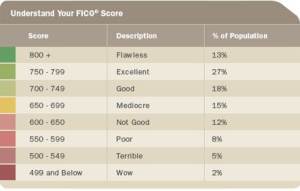The second mortgage can foreclose even after the Promissory Note was eliminated with a Chapter 7 Bankruptcy Discharge. Quite simply, the second mortgage initiates the foreclosure process under the rights of the second mortgage Trust Deed subject to the rights of the first mortgage trust deed.
By foreclosing under these circumstances, the holder of the second mortgage, following a specific legal action starting with the posting of a three day notice, may evict the residents. Should one be threatened with a three day notice to quit the property, you may wish to immediately call your attorney as this is a serious invitation to professionally negotiate a short settlement immediately.
By way of background, once the payments to the second mortgage aren’t made, the mortgage is in default. The mortgage holder has four separate options to protect its interest. First, it can do nothing and sit on its rights. Second, in Colorado, it can initiate a Public Trustee foreclosure. Third, it can file for a judicial foreclosure, although this rare in Colorado. Fourth, it may buy-out the first deed of trust and thereby perfect its position. If the junior (second) mortgage selects either the second or third option, it is most likely that the first deed of trust will also foreclose.
The Basics
A mortgage consists of two legal documents: the Promissory Note and the Deed of Trust or Trust Deed (TD). The second TD lives on, in virtually all cases, following the Chapter 7 Discharge.
Equity is returning to many real estate markets throughout the country. Among the markets enjoying substantial equity growth are several areas in Colorado, particularly along the Front Range as well as many mountain and resort counties.
Statute of Limitations
The Statute of Limitations (SOL) on a second mortgage is 15 years following the original due date; however there are exceptions and particular legal nuances which apply to this SOL. To determine how the SOL may or may not apply to a particular set of facts, you are advised to consult with legal counsel well versed with both bankruptcy and real estate law. One needs to understand that TD that has been written off continues to be a collectible debt for so long as the SOL hasn’t run the term. Written off is merely an accounting term, nothing more or less. Written off is not a ‘get out of debt free’ card.
The Short Payoff
Let’s discuss possible solutions to this situation which is becoming more common as equity returns to certain real estate market.
A short payoff occurs when a borrower cannot pay the mortgage on the property and is allowed to sell the property for less than the full amount due. This results in a loss to both the lender/servicer and the investor. All parties must agree to the mortgage being paid “short”. Providing there is a ‘make sense deal’, the lender will do this so as to avoid the expense and time of the foreclosure process. Given there are several parties involved in this decision making process, reaching consensus can take quite a lot of time – often months.
Short Payoff Settlement -Financial Negotiation
Typically the least successful negotiator is the one with an emotional involvement in the negotiation. The saying, often attributed to Abraham Lincoln, describes this situation quite well: “A person who represents himself has a fool for a client.”
This is a business transaction which may involve disclosing your income, assets, liabilities as well as proof of your ability to pay a certain amount to obtain a Release of the Trust Deed. It is suggested that by having a well prepared Comparative Market Analysis coupled with a professional Home Inspection Report to submit with your proof of ability to pay will be beneficial to reach a decision. You may expect the lender/servicer will pull a credit report in addition to thoroughly investigating your request for a short payoff settlement. They must and will investigate and verify who you say you are and your circumstances. Short Payoff Fraud is of great concern to lenders and investors alike which explains, to some degree, how difficult these negotiations can be.
Short Payoff Settlement – Hardship Negotiation
Hardship criteria include: involuntary unemployment; divorce; long-term disability; a change of employment that is more than 50 miles from the current home; a business failure; death of the primary or secondary wage earner; or a natural or man-made disaster.
I had the opportunity to assist a senior couple negotiate a hardship short payoff on a “written off” second mortgage last year. This second mortgage had been discharged in a 2011 Chapter 7 and had been “written off” a few years before the bankruptcy case was filed. The principle balance due on this second was $55,000.00; the final settlement to Release the Trust Deed was just under $7,000.00.
From the time this negotiation process began until it was successfully completed took 220 days. The hardship in this situation was long-term disability with both borrowers. We documented both of their hardships with letters from their physicians as well as photographs and x-rays documenting specific medical procedures. Finally we documented their ability to pay the negotiated short payoff by providing evidence of the gifted funds in a bank checking account.
Financially Speaking™ James Spray, MLO, CNE, FICO Pro | CO LMO 100008715 | NMLS 257365 | April 15, 2014
Notice: The information on this blog is opinion and information. While I have made every effort to link accurate and complete information, I cannot guarantee it is correct. Please seek legal assistance to make certain your legal interpretation and decisions are correct. This information is not legal advice and is for guidance only. You may use this information in whole and not in part providing you give full attribution to James Spray.



